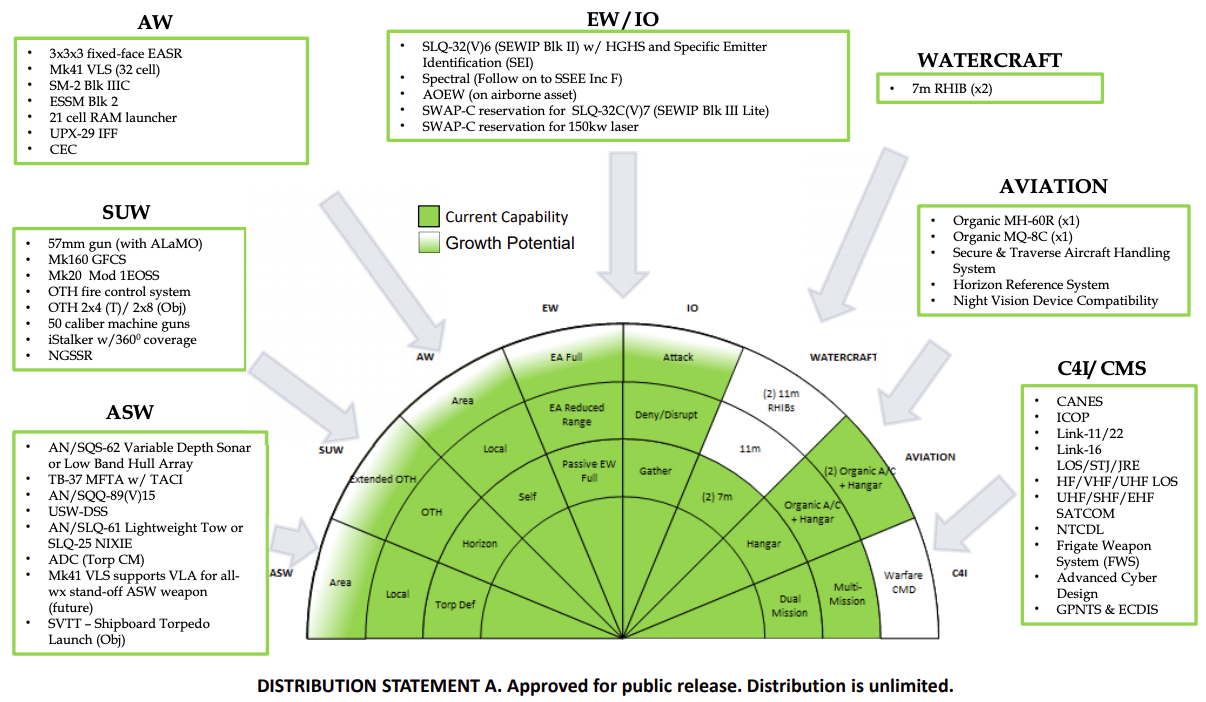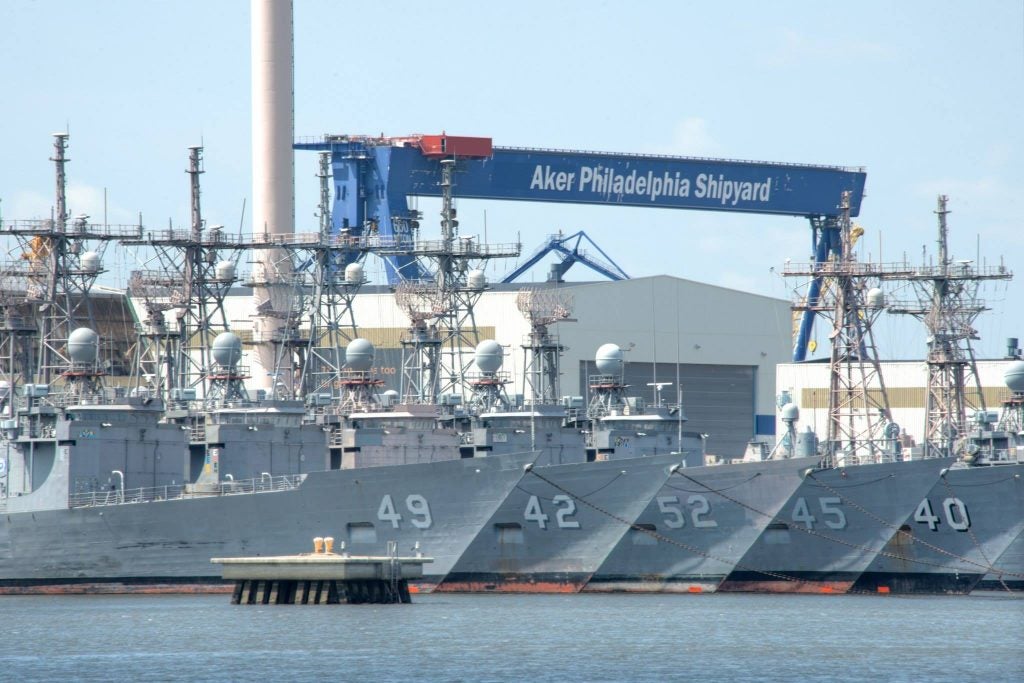FFG(X): What Will the US Navy Choose for its New Frigate?
For US Navy watchers, the FFG(X) program presents a chance to return to form for the USN. The last true frigate the USN operated was the Oliver Hazard Perry class, the last of which was retired in 2015. The original plan was for the Littoral Combat Ships to take over the role, but ongoing issues with LCS prevented that from becoming a reality. Now, with the push for 355 ships well underway, the Navy needs more ships, and it needs them for cheaper than the $1.5+ billion it costs to put an Arleigh Burke in the water. Enter from stage left the future FFG(X).

There is no lack for capable guided missile frigates in the world today. Between the French-Italian FREMM design, the Spanish F-100 and derivative Fridtijof Nansen, British Type 23s, the German export MEKOs, and many more, the USN stands out as being the only major naval power to lack a frigate in service. This becomes all the more acute as more of the large surface combatants, the Arleigh Burke destroyers and Ticonderoga cruisers, get tasked to ballistic missile defense patrols, anti-piracy work, or other work that pulls them away from their primary duties.
The USN knows this. Or rather, the USN recognizes this for the multifaceted problem that it is. It is, broadly speaking, a problem that stretches from the ship yards on the Atlantic and Gulf coasts, to the halls of Congress, to the Persian Gulf and the coast of North Korea and anywhere else the vessels may be expected to sail. The future frigate will have to be lethal enough to shoot it out with peer adversaries and win, while being survivable enough to take a hit and still come home. It will have to be able to hunt submarines one day, and defend itself from a salvo of anti-ship missiles the next. In the even of a major conflict, it will have to be able to successfully escort merchant ships across the great oceans of the world without the benefit of a Ticonderoga class cruiser helping out, or the protection provided by a carrier air wing.

Perhaps more challenging, the winning design must be affordable and politically acceptable. Congress is unlikely to authorize the Navy to build a ship that does not utilize as many American jobs as possible. The Navy suffers, organization wide, from the same not-built-here syndrome that the rest of the Department of Defense does. American military shipyards are struggling under constant boom-bust cycles, resulting in a dire need for long-term stability, a stability it was hope LCS could provide. FFG(X) must then, politically, serve as a the fix-all for a broad range of problems from the shipyards to the fleet. And it has to do it for cheap.
The Navy is looking to spend no more than $800 million per hull once series production begins. This, for reference, is somewhere between 1.6 to 2 times more than the per-hull cost of LCS, while being larger, having better sensors, and significantly more weapons. Navy spokespeople say this is feasible, though the first in class is expected to be significantly more expensive than the rest.
The five options for the Navy to choose from are as follows:
1) Lockheed Martin’s enlarged version of the Freedom-class LCS hull
2) Austal USA’s enlarged version of the Independence-class LCS hull
3) Huntington Ingalls’ adapted Legend-class cutter design
4) Fincantieri Marine’s FREMM design
5) Navantia’s F-100 AEGIS frigate design
All of these are, at least nominally, capable designs. More importantly, all of them should fit, or be adapted to, the requirements laid out by the USN. The public got a look at the specific requirements recently, as illustrated by this graphic.

These requirements suggest a capable omni-role combatant, with the ability to become an exceptional asset in relevant areas. Importantly, in a move to keep costs down, FFG(X) won’t use SPY-1 or the AEGIS combat system, both of which make up for a not insignificant fraction of the overall cost of any warship with them mounted. The challenge, as always, will be how much it will cost to get all these systems on the same hull, working together as intended.
The stand-out question is which option the USN will decide to go with. Until that decision is made later this year, everything is speculation. There are several factors that play into this selection, only one of which is the best ship for the job. Also influencing the Navy’s choice will be the adaptability of the design to their specific requirements, the breakdown of labor and jobs, and the results of the ever changing calculus of force requirements. However, some informed speculation can be made at this point (though it is important to point out that it is just that, speculation).

The Navantia-designed F-100 design has probably been seriously challenged by the collision last year which sank the HNoMS Helge Instad, in a painfully public display of failures in damage control. The US Navy rightly prides itself on a strong history of highly capable damage control efforts, and the ability to “save the ship” even after suffering significant damage. Examples such as the Stark and Samuel B. Roberts, being struck by two Exocet missiles and a mine respectively, are simultaneously icons of what to right in damage control and object lessons in how not to get there in the first place. The 7th fleet collisions in 2017 were symptomatic of a systemic failure in leadership and ensuring crews got their required rest, but both ships made it back to port still afloat. The idea of a future frigate not coming home after taking serious damage is not one the US has had to seriously contemplate since WWII, and that counts for a lot.
The Italian FREMM design, separate from the similar French variant which is not under consideration, is the much stronger of the two international candidates. Half the Italian FREMMs are optimized for anti-submarine work, while the rest are less single mission focused. The ship, while capable, is going to face an uphill struggle as a foreign contender in an American competition. The strength of her ASW fit, with the space for a large and capable Variable Depth Sonar, will do the design well as the Navy comes back around to focusing on the mechanisms of great power competition. In my personal estimation, the FREMM has as much of a chance of being selected, and the eventual result will depend on if the Navy feels that it can build and operate the FREMM without interference from Congress.

The Huntington Ingalls Legend-class cutter derivative is a ghost at the time of writing. The only information that appears to credible is that their final pitch was unlike those shown to the public when the FFG(X) program was first being spun up. Given the lack of credible information, it seems rather useless to speculate. However, the other contenders in the competition were stronger when last the public got a look at the HII design, and as such, I have trouble believing they have turned it into a dark horse winner.
The last two competitors are both larger, more capable versions of the two LCS designs. In my mind, one of these has the best chance to win the competition for several reasons. The first is the expected bias towards keeping Austal or Marinette Marine in business with new contracts. The second is that the designs are being drawn from the ground up for the new electronics and sensors that the USN requires, rather than having to adapt existing designs. In a way, not having been built yet serves as an advantage, as the integration issues with newly designed sensors and other technologies on the USS Gerald R. Ford and Zumwalt have shown. They also have the advantage of being designed from the ground-up for the Navy’s particular requirements, and that is an advantage that shouldn’t be underestimated.

Between the two options, the mono-hull Freedom derivative or the catamaran Independence derivative, I’m of a split opinion. The more conservative Freedom seems more likely to be able to stay on budget and on schedule, as much as can be expected with the class. However, the massive aviation facilities, and space for a comprehensive sonar suite (including a VDS like on the FREMM), suggests it would be attractive to the Navy. At this point, my personal guess is that the Lockheed Martin/Marinette Marine Freedom derivative is probably the best candidate for the future FFG(X), but the reality remains to be seen.

